MICHAEL JACKSON'S 1993 OPRAH INTERVIEW ON HIS VITILIGO SKIN DISORDER
Black...Then White: Michael Jackson & Bleaching - The Truth About The Singer's Vitiligo Skin Disorder
MICHAEL JACKSON'S VITILIGO, the skin lightening condition, offered up a startling insight into how, with the aid of modern cosmetic procedures, a man can change from black to white. By Ben Arogundade.
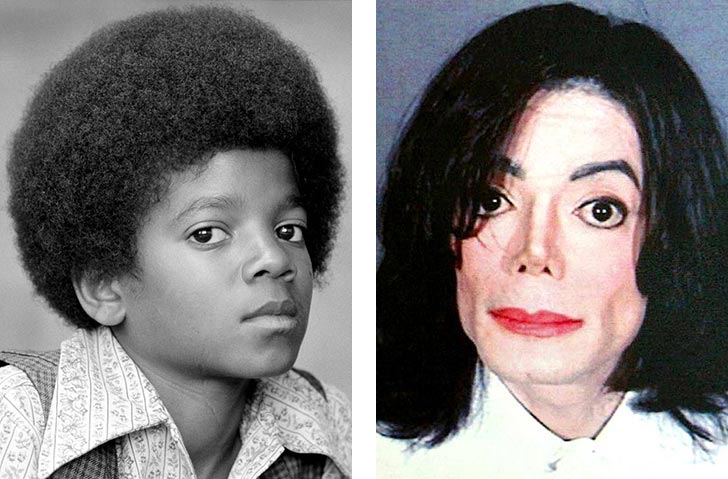
THE SUDDEN AND TRAGIC DEATH of recording artist Michael Jackson on June 25, 2009, finally answered the question that many had been asking for over two decades of his illustrious career. Was the singer bleaching his face and body, or did he suffer from the skin condition, vitiligo?
The answer is, in fact, both. The autopsy conducted after the singer's death confirmed what Jackson and his family had maintained from the very beginning — that he indeed suffered from vitiligo, and had not, as many claimed, deliberately bleached his skin because he was unhappy being black.
JACKSON, GOOGLE & VITILIGO
Since Jackson's death, fans interest in the singer's vitiligo skin condition has remained intense. This is well illustrated by Google, who record and publish monthly Internet search figures on all subjects. For example, currently, approximately 3,600 people Google the term, “Michael Jackson skin disease” each month, while a further 10,000 search, “Michael Jackson vitiligo”. The total number of queries about Jackson's skin adds up to over 150,000 per year.
VITILIGO SKIN DISEASE EXPLAINED
Vitiligo is an autoimmune disorder that causes a loss of pigment on sections of the skin. This de-pigmentation is not uniform, but manifests itself in blotches and patches on the body, particularly around the face and hands. It occurs when melanocytes — the cells responsible for skin pigment — die or cease functioning. The condition is not specific to those of African descent, but is simply more visible as a result of their darker pigment. Michael Jackson inherited his vitiligo skin condition from his father’s side of the family. “We saw it coming on him at an early age,” Joe Jackson recalled. “You know, just a little spot. My aunt had the same thing.”
JACKSON'S SKIN FADES
Jackson, whose album, “Thriller”, has sold over 70 million copies, first learned he had the vitiligo skin disease back in 1986, barely four years after the release of the album. At this point, with the disorder in its infancy, Jackson's make-up artist Karen Faye used brown powder to conceal what were then only small bleached patches. At the same time he began to cover up his skin for public appearances, wearing long sleeves and adopting his trademark gloves to hide white patches on his hands and wrists. But over time the vitiligo became more aggressive, increasingly covering larger areas of his body, particularly his chest, abdomen, face and arms. “Michael is now almost completely devoid of colour,” confirmed Faye at the time. He was forced to take a drastic decision that would have deep racial overtones — to even out his skin tone to white — an easier task than wearing brown make-up all over his body, which would have been harder to apply in an even tone. “Instead of having it spotted like a cow or something like that he just decided to just do the whole thing,” said his mother Katherine.
In a bizarre Kafka-esque twist, Jackson was forced, aesthetically, to become a “white man”. Jackson used skin bleaching creams to achieve this. Detectives who searched his home after his death found 19 tubes of hydroquinone and 18 tubes of Benoquin, both commonly used for whitening skin.
MICHAEL JACKSON - BLACK OR WHITE?
In the years leading up to his death, despite testimony from the singer’s friends and family, dermatologist Arnold Klein, Karen Faye, and from Jackson himself during the famous televised interview with Oprah on February 10 1993, many refused to believe that he suffered from the vitiligo skin disease, and questioned why it had taken him a decade to reveal it, when he could have put paid to the rumours much earlier. Accusations of him not wanting to be black emerged, not simply from his pale skin tone, but also from the fact that he had traded in his Afro curls for long straight hair, and had undergone cosmetic surgery to create a European-style nose. He seemed determined to de-Africanise himself.
SKIN DIS-EASE
Looking back, Jackson's mistake was not to show his skin condition to the world when it began to manifest in the late 1980s. Exposing his vitiligo for all to see would have sent out a powerful message of positivity to the two per cent of the world's population that suffer from the condition — that they should not feel outcast or be hidden away. Jackson's decision not to do this may have had much to do with his mis-trust of the press, after their endless volume of fabricated stories about him. By contrast, black model Chantelle Winnie, who also suffers from vitiligo, instead of hiding it, has openly embraced her skin condition as a positive aspect of who she is.
LESSONS FROM THE VITILIGO SKIN CONDITION
What lessons can we learn from a celebrity whose skin so dramatically and publicly metamorphosed from black to white? Perhaps that race should not be mistaken for identity. Jackson’s startling tonal shift through vitiligo, and our reactions to it, reveal the contradictions of a world in which race still matters, but also does not matter at all — in other words, race endures as long as it is used as a vehicle for discrimination, prejudice and control, but simultaneously it is irrelevant as a signifier of an individual’s true identity within the same society. Identity cannot be revealed by aesthetics, but by personality, humanity, heart, talent, and so on. As Jackson himself once said, “What does my face have to do with my music or my dancing?” These sentiments are the same as those expressed by Dr. Martin Luther King, when he famously said, “I look to the day when people will not be judged by the colour of their skin, but by the content of their character.”
Through his vitiligo, Jackson became the carrier of this truth; and it had to be him — who else could carry the message? By changing the world’s most famous black man into the world’s most famous “white man”, the irrelevance of race is revealed in the most dramatic fashion. Michael Jackson died with pale skin, but with his achievements intact.
One of the legacies he leaves behind is the truth about human life on Earth — that we are all black, we are all white, we are all connected, we are all one.
Ben Arogundade's book, 'Black Beauty' is out now.
BLACK & WHITE; The late Michael Jackson's visual transformation from African-faced child to European-featured adult was both startling and disturbing to many fans. Was he bleaching his skin, or did he suffer from the skin disease, vitiligo? The fact is, his autopsy confirmed that he did suffer from the vitiligo skin condition, and that he used pale make-up to even out his skin tone after large areas of his body lost their pigment.
The Creativity of Author, Designer & Publisher Ben Arogundade
Home
Books
About
Articles
BLACK = UGLY
The Shocking History Of Black Beauty.
RECOMMENDED FOR YOU
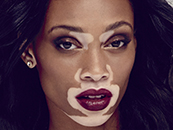


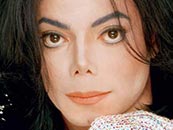
THE PALE KING: Many accused music celebrity Michael Jackson of lightening his skin because he was unhappy being black, but these images show clear signs of the vitiligo skin condition on his arm, chest and face.
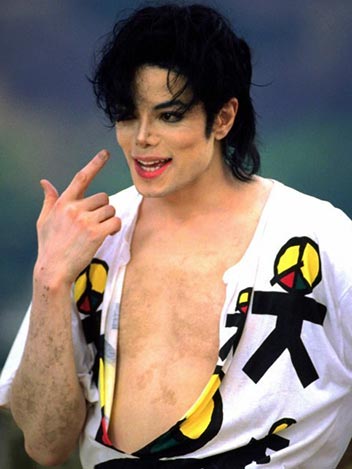
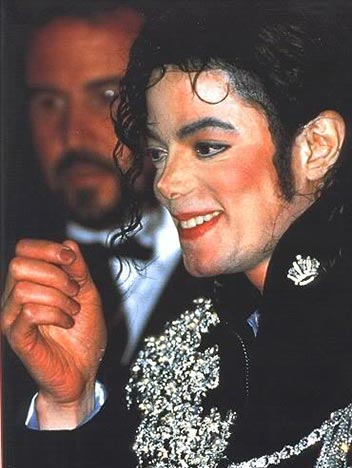
*MICHAEL JACKSON, RACE AND VITILIGO, ACCORDING TO GOOGLE SEARCH
2
The percentage of the world's population affected by vitiligo.
1,900
The number of people worldwide who Google the phrase, “Michael Jackson face” each month.
3,600
The number of people worldwide who Google the phrase, “Michael Jackson skin disease” each month.
10,000